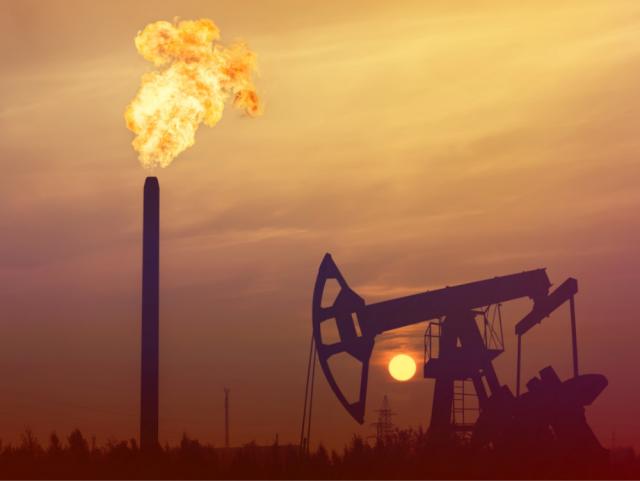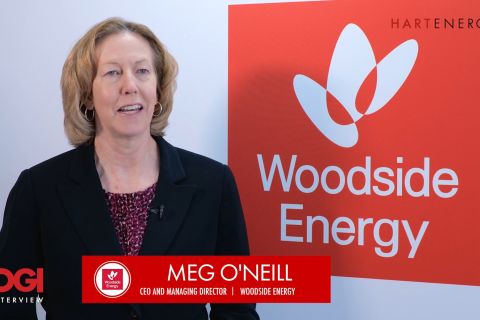
(Source: Shutterstock.com)
Upstream oil and gas companies participating in The Environmental Partnership on July 15 welcomed the midstream sector, more than tripling its membership to 83 participants.
Working with the American Petroleum Institute (API), the partnership comprises companies of all sizes across the U.S. each aiming to lower emissions of methane and volatile organic compounds. Their efforts, some of which are required by existing regulations, have included stepping up monitoring, implementing leak detection and repair programs and replacing high-bleed pneumatic controllers.
“Using EPA [Environmental Protection Agency] estimates, we know that finding and fixing leaks can achieve a 60% emission reduction, and replacing high bleed controllers is at least a similar cut in emissions—60%—and likely significantly greater based on recent emissions studies at investigating controller emissions,” Matthew Todd, director of The Environmental Partnership, said on a media call July 15. “Many of the actions taken by the companies, removing gas-driven controllers from operations, are eliminating emissions entirely.”
Data show efforts demonstrated by participating companies are working, he added.
Companies taking part in the partnership’s Leak Detection and Repair Program in 2019 carried out more than 184,000 leak surveys at more than 87,000 production sites. The work included an estimated 116 million inspections of components such as valves, flanges and connectors—typically places where leaks can occur. “Of these components, operators identified leak occurrence rate of just 0.08%,” Todd said, explaining that is less than one leak for every 1,000 components. That was an improvement from about two leaks for every 1,000 components in 2018.
Other results, which were shared July 15 in an annual report, included replacing, retrofitting or removing from service more than 3,300 high-bleed pneumatic controllers, removing from service more than 10,500 additional gas-driven controllers and installing more than 2,800 zero-emitting controllers.
“Similar to our current environmental performance programs and informed by EPA reporting data, midstream companies will take additional steps to further reduce emissions associated with pipeline blowdowns and compressor operations,” said Vanessa Ryan, manager of the carbon reduction team at Chevron Corp. and chair of the partnership.
The work is underway as the industry continues to endure unfavorable market conditions, massive spending cuts and widespread layoffs. The COVID-19 pandemic, which has slowed demand, also adds uncertainty.
“Of course, unforeseen public health and economic challenges have presented new hurdles to America’s natural gas and oil industry. But nothing has moved energy operators away from their continued commitment to leading the world in energy development and environmental performance,” said Mike Sommers, president and CEO of API. “In fact, the pandemic has brought a new level of urgency to operationalize our mission to learn, collaborate and take action to responsibly develop our nation’s essential energy resources.”
The partnership includes a range of companies, spanning from small independent energy firms to large integrated majors.
Sommers added that each company vowed to report annually to “demonstrate their progress in implementing programs that address emissions across a wide range of operations.”
Asked whether current industry conditions, such as the growing wave of bankruptcies and tasks of plugging abandoned wells, could impact efforts as companies are strapped for cash, Sommers referred to regulations, taxes and fees.
“As far as abandoned wells, there are state taxes and fees in place paid by API member companies that are used to pay for plugging orphan wells, and companies are otherwise liable to plug wells and reclaim wells sites through federal regulations,” he said. “API also has a standard in place on this important practice. So, we want to make sure that, to the extent that there are bankruptcies, all API members are complying with all of these regulations that are in place.”
Speaking of regulations, Sommers said the API has also submitted comments to the EPA on the future regulatory scheme for methane the agency is devising. The final rule is expected in the coming months.
“Our industry does support ongoing methane emission controls, both through cost-effective federal regulation that reduce methane emissions and measurable industry action, which would include programs like The Environmental Partnership,” Sommers said. “And we seek to make sure that we’re incorporating methane reducing technologies throughout the supply chain.”
Recommended Reading
NAPE: Turning Orphan Wells From a Hot Mess Into a Hot Opportunity
2024-02-09 - Certain orphaned wells across the U.S. could be plugged to earn carbon credits.
Exxon Versus Chevron: The Fight for Hess’ 30% Guyana Interest
2024-03-04 - Chevron's plan to buy Hess Corp. and assume a 30% foothold in Guyana has been complicated by Exxon Mobil and CNOOC's claims that they have the right of first refusal for the interest.
Petrobras to Step Up Exploration with $7.5B in Capex, CEO Says
2024-03-26 - Petrobras CEO Jean Paul Prates said the company is considering exploration opportunities from the Equatorial margin of South America to West Africa.
The OGInterview: How do Woodside's Growth Projects Fit into its Portfolio?
2024-04-01 - Woodside Energy CEO Meg O'Neill discusses the company's current growth projects across the globe and the impact they will have on the company's future with Hart Energy's Pietro Pitts.
Deepwater Roundup 2024: Offshore Australasia, Surrounding Areas
2024-04-09 - Projects in Australia and Asia are progressing in part two of Hart Energy's 2024 Deepwater Roundup. Deepwater projects in Vietnam and Australia look to yield high reserves, while a project offshore Malaysia looks to will be developed by an solar panel powered FPSO.






